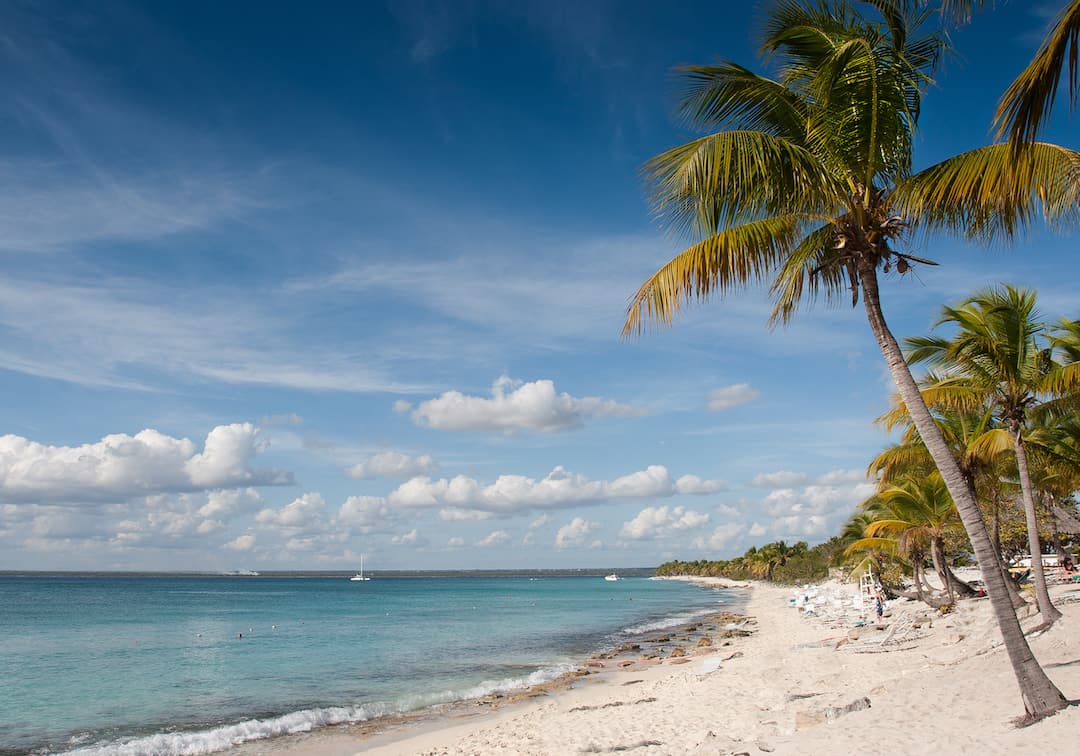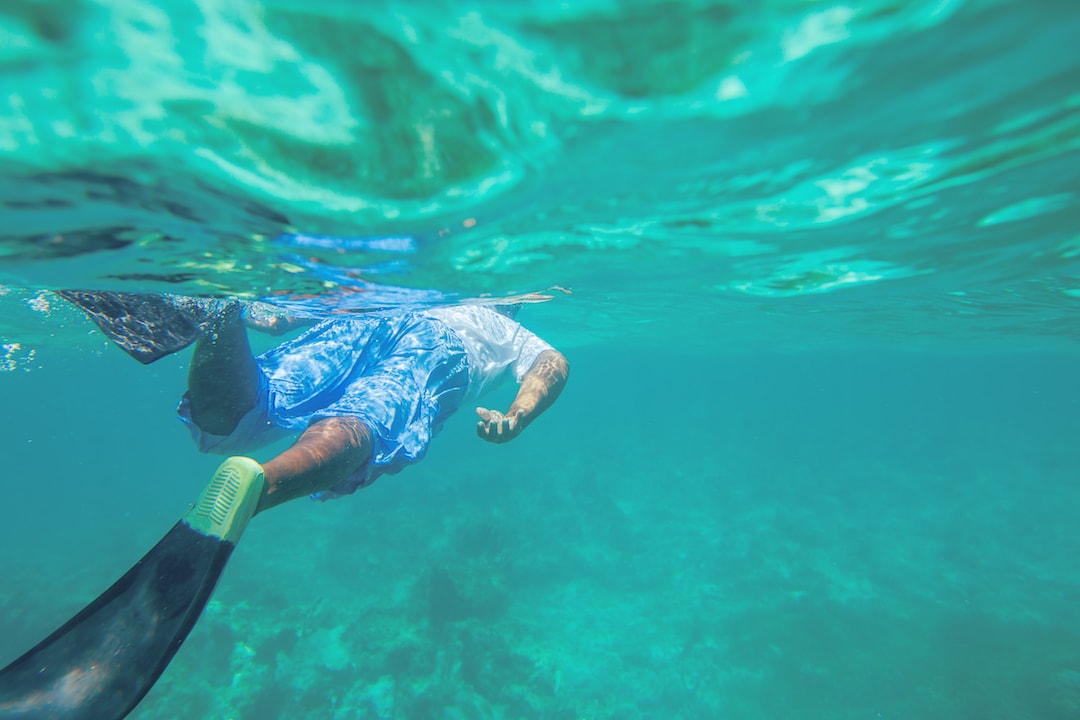Long stretches of sandy beaches and shallow waters make the Dominican Republic the ultimate island paradise. In this small island nation in the Caribbean, long warm days are best spent lazily on a quiet beach with nothing to do but sip on fruity cocktails and snack on delicious coconut cakes touted by friendly local women. It’s the definition of heaven.
Occasionally, however, you take a refreshing dip in its gently lapping waves, or best yet, you snorkel and dive for hours or so because underneath those pristine waters hide sandy bottoms filled with coral reefs that host starfish, sea urchins and schools of fish. Before you jet off on your next underwater adventure to the Dominican Republic, this is your guide to snorkelling and diving. It’s time to find out where you need to go and more.

What to know before you go
- Peak season: Though the Dominican Republic suffers high humidity and extreme heat in the summer months, some of its busiest months are still July and August, when US travellers join the French and other European crowds. December through January are just as busy. Most popular are crowded and many of the all-inclusive resorts that pepper the island are at capacity.
- Best time to go: Keep in mind that it boasts a consistently warm weather. Therefore, beyond its Hurricane season from August to September, snorkelling and diving opportunities abound year-round. Score deals on hotels and beat the crowds by visiting in the early June or going during the shoulder months.
- Safety: The country is pretty dependent on the tourism industry. Safety of its visitors, therefore, is a top priority. In addition, the Dominicans are one of the friendliest, most welcoming bunch in the Caribbean. However, petty crimes and scams are not unheard of so exert a healthy amount of caution and exercise common sense when travelling the country without a guide.
- Getting around: Getting around the island is not easy. The Dominican Republic does have publicos or carros, motoconchos and buses, but they don’t run as often. To save time, rent a car, hire a tour guide or join a tour group that will secure your transportation needs for you.
- Accommodation: The DR is known in some ways for its all-inclusive resorts, which range from budget to high-end. To save money and avoid unplanned expenses, many prefer to stay at an all-inclusive which essentially offers unlimited food and drinks during your stay. However, there are a la carte hotels as well as hostels if you’re on a limited budget.
Snorkelling Vs diving in the Dominican Republic
Whether you’re a diver or an avid snorkeller, getting the lay of the land – or in this case, the coast – is important. This is because the Dominican Republic’s top tourist destinations like Punta Cana, which offer great snorkelling opportunities, might not exactly offer the best diving conditions during certain times of the year.
It’s best, therefore, to decide on one activity and then choose your destination. Punta Cana is best for snorkellers as well as water sports enthusiasts while Boca Chica and Bayahibe are primed for scuba diving. Or get a bit of both world by heading straight for Samana, which boasts stunning lagoons for snorkelling and deep water spots for diving.
Best snorkelling spots
Catalina Island, La Romana
This small island just off the La Romana attracts many visitors for its excellent snorkelling opportunities thanks to its reefs and biodiversity. Marine animals to spot here are the porcupine fish, green and blue parrotfish, moray eel, stingrays, angelfish, butterfly fish and lionfish.
Playa Rincon, Samana
It’s one of the most beautiful beaches in the Caribbean, Playa Rincon might just be the Dominican Republic ’s worst-kept secret. This stunning lagoon is home to a long stretch of beach and blissfully calm, shallow waters that harboured sand dollars, beautiful seashells and reefs filled with fish.
Saona Island, East National Park
Many species of fish call the coral gardens near Saona Island, part of the East National Park, home. But while they do make snorkelling a colourful experience, there’s one marine life in Saona that really draws the crowds—the red-coloured Bahama starfish. These beautiful echinoderms can grow to up to nine to 10 inches and are abundant in the area.
Cabeza de Toro Beach, Punta Cana
If you go snorkelling in Punta Cana, best do it at Cabeza de Toro Beach. It’s not only one of the best beaches in this resort region, it also has some great snorkelling just a stone’s throw away from the beach. Many species of brilliantly coloured fish abound, as do stingrays.

Best diving Spots
Pedernales, Pedernales Province
Practically a hop, skip and a jump away from Haiti, this town near the border is a jumping off point to the Dominican Republic ’s best diving spots—Cabo Rojo, Beata Island and Los Frailes, to name a few. The key to seeing all of its wonders, which are home to reef, bull and tiger sharks, turtles and barracudas, is to go on a multi-day trip with a dive company.
Monte Cristi Pipe Wreck, Monte Cristi
Hawksbill turtles, dolphins and even manatees are the least interesting things to see in this impressive wreck dive spot. That is because this haunting site is a shipwreck graveyard, with more than 400 sunken ships that are hundreds of years old.
La Sirena Cave, Boca Chica
A dive in La Sirena is not for the claustrophobic, but if you’re an experienced diver who enjoys getting into tight spaces, the underwater world in this cave might just make your vacation, what with its passages, stalactites and stalagmites, and halocline, all visible thanks to the pristine water.
Sosua, Puerto Plata
This resort town in Puerto Plata in the north boasts its own dive site just a boat ride away from Playa Dorada. Marine life sightings here doesn’t only include multi-coloured fish, but also sea spiders, lobsters, stingrays, eels, gars, flatfish and other curious-looking creatures.
La Caleta Underwater Park, Santo Domingo
Just off the coast from an archaeological site, La Calera is the Dominican Republic ’s first underwater park and is a popular spot amongst divers. Though not quite aesthetically pleasing, this park is full of amazing curiosities. The main attractions here, besides the typical starfish, eels and vibrant shrimp, are the rockfish, bearded fireworms and nudibranchs, which are in amazing abundance.
Saona Island, East National Park
It isn’t just great for snorkellers. Saona Island, not far from La Romana and a boat ride away from Punta Cana, has offerings for scuba divers as well. Coral reefs teeming with fish, barrel sponges, gars, sea spiders, stingrays, brittle stars and even the occasional sea turtle.
How to get certified
Most of the Dominican Republic’s resort towns and regions, like Punta Cana, Puerto Plata and La Romana, have diving companies that offer multi-day PADI dive courses and give you your certification once you’ve completed the phases. Reputable companies like SeaPro Watersports offer certifications that range from Open Water to Dive Master, so whether you’re a beginner or an experienced diver looking to advance your skill level, you definitely have options on hand.
Share your best tips for the Dominican Republic below!

